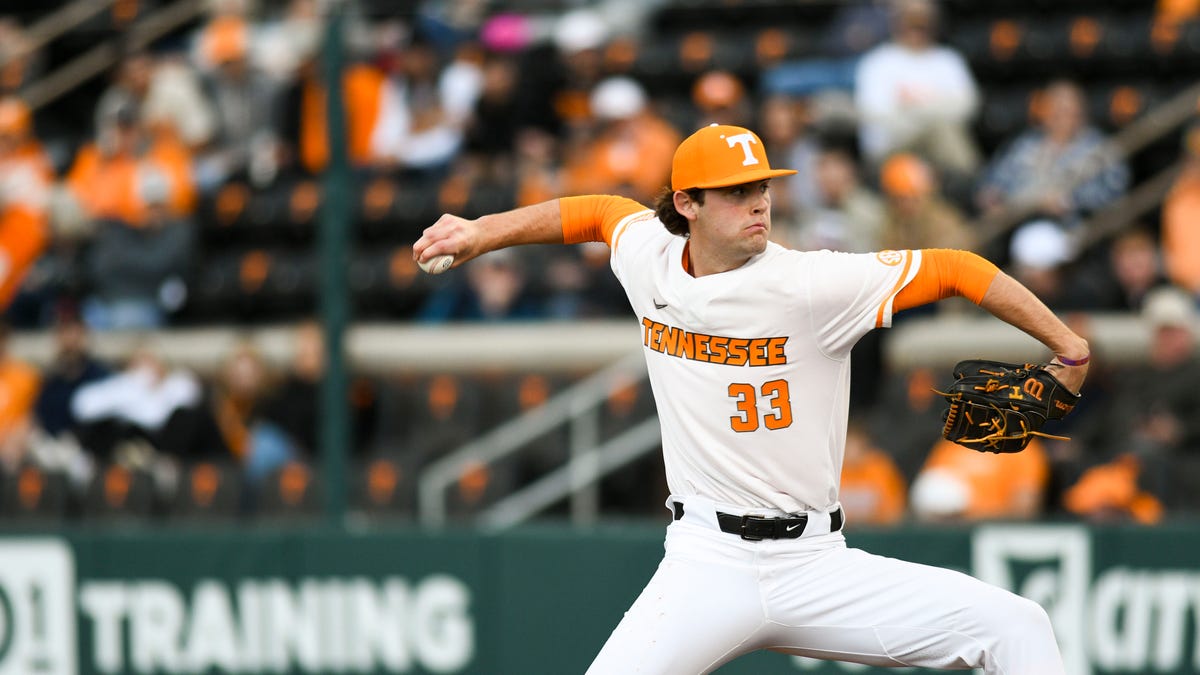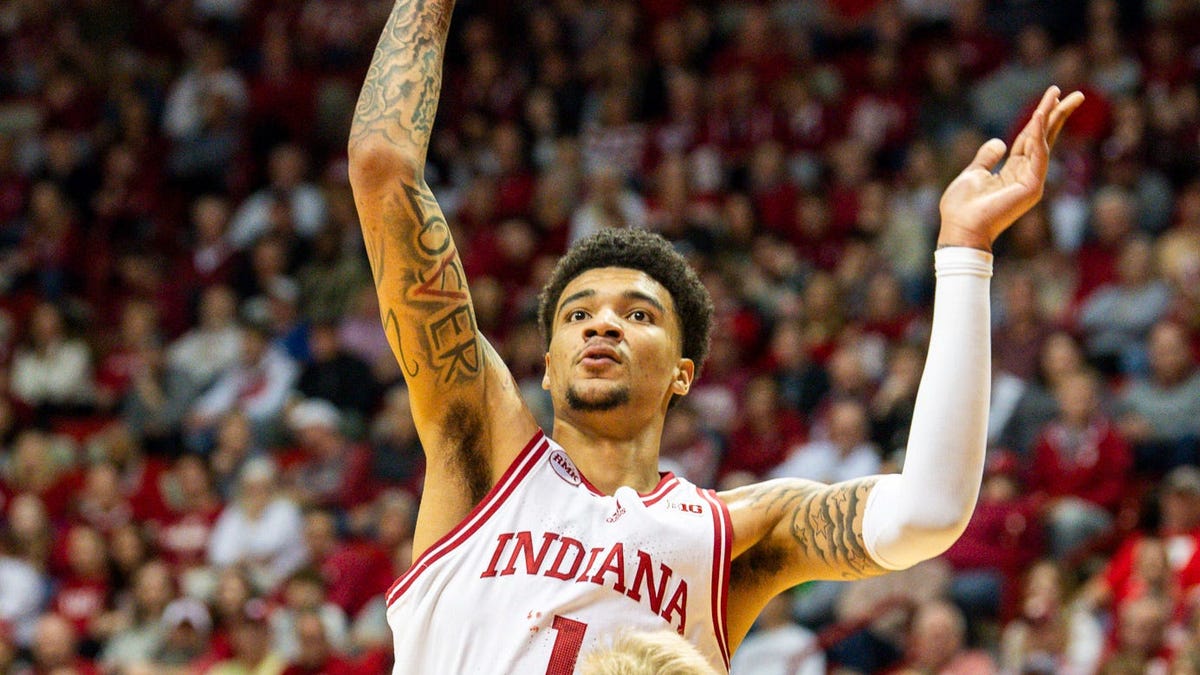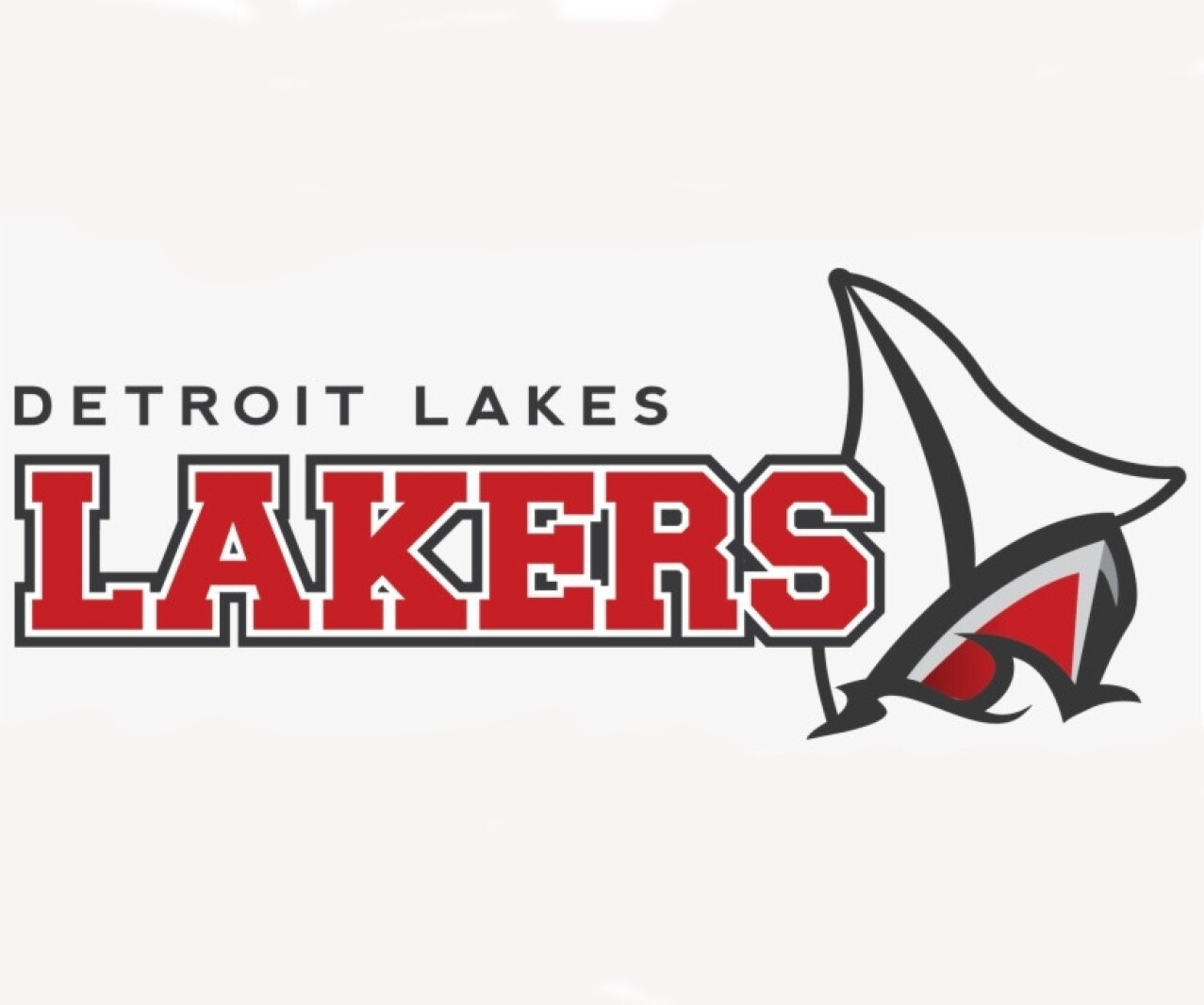Sports
As 'avalanche' hits NCAA and paying players debate continues, change is coming

With College Football Playoff expansion and NCAA men’s basketball tournament rights totaling $2.4 billion annually and women’s basketball’s most marketable player in history — Iowa’s Caitlin Clark — launching her sport to unprecedented television viewership, collegiate sports appear healthy, vibrant and lucrative. That goes for everyone except the participants.
Questions are brewing from college officials to legal scholars about whether athletes should receive a piece of the postseason revenue. Those discussions have spilled over to athlete rights and employment status, both of which likely will be determined in federal court.
NCAA president Charlie Baker, who spoke briefly before Sunday’s women’s championship game, said he wants “to make some changes to how support for student-athletes works in Division I.”
“We’ve done a number of things that are ready to deal with that, but I’m not going to get ahead of the membership on that sort of thing,” Baker said. “I’m sure it’s a conversation we’ll be having.”
But where does the membership stand on paying players? Judging from a recent panel discussion at the University of Iowa, legal scholars and experts are all over the place. With lawsuits threatening to blow apart the current amateur model and the prospect of a college football super league looming in case it does, the questions are endless. But authorities agree change is coming — fast.
“The avalanche has officially hit the NCAA,” said Dan Matheson, Iowa’s director of sport and recreation management program and a former NCAA associate director of enforcement.
GO DEEPER
Why is the NCAA proposing a new subdivision? Explaining the related legal battles
In the wake of the U.S. Supreme Court’s 9-0 Alston ruling in 2021, which allowed athletes to receive compensation for name, image and likeness (NIL), legal issues continue to mount for the NCAA. A National Labor Relations Board regional director ruled this year that Dartmouth men’s basketball players are employees. In a complaint filed with the NLRB and testimony ongoing, the National College Players Association considers USC athletes employees of the university, the Pac-12 and the NCAA. In addition, a class-action antitrust lawsuit regarding past NIL rights could cost the NCAA and its membership more than $5 billion.
With players allowed to generate income off their NIL, employment is the last step in the blurry barrier between amateur and professional status. It’s the most difficult one for most experts to navigate because no one can agree on the parameters. Is it just the athletes from revenue-generating sports or all of them? How will it impact Title IX? How much will each athlete earn? Will non-revenue sports survive?
Looking forward to a riveting panel discussion AND 2.0 CLE hours for all you lawyers in the area! There’s a livestream option here: https://t.co/6iM16S9F7y pic.twitter.com/TZSgHoCUga
— Dan Matheson (@DanMatheson) March 27, 2024
Alicia Jessop, a Pepperdine sports administration professor who doubles as the school’s NCAA faculty athletics representative, demanded the NCAA shift course and accept that athletes are employees. Jessop, a member of the NCAA Division I men’s basketball oversight committee and a practicing attorney, argued that putting up resistance and talk of collateral damage is “fear-mongering.”
“The NCAA continues to unsuccessfully and to the tune of millions of dollars in lobbying fees try to persuade Congress to grant it antitrust immunity,” Jessop said. “The likelihood of Congress passing such bills is as good as Caitlin Clark not being the No. 1 overall WNBA draft pick.”
Husch Blackwell law partner Jason Montgomery, a former NCAA lead investigator, disagreed.
“It’s clear that the NCAA is on the worst losing streak in sports since the Bills’ four Super Bowl losses. They are terrible at litigating,” he said. “But current and well-established law in this country says that college athletes are not employees. The Department of Labor says they’re not employees. No federal court has ever said they’re an employee.”
Universities are concerned employee status and compensation would bankrupt athletics departments. Paying athletes could force some departments to eliminate many non-revenue sports, which form the lifeblood of Olympic rosters. Nevius Legal attorney Libby Harmon, who worked as a lead NCAA investigator for 10 years and also served as compliance director at Michigan, said of the 626 athletes for Team USA in the 2020-21 Olympics, 76 percent were current or former athletes from 171 different institutions.
To Jessop, any attempt to trim Olympic sports is an excuse. She cited numbers from USA Today that most Division I coaches averaged a 15.3 percent salary increase in 2021 — after the pandemic financially crushed many departments — plus soaring salaries alongside modest scholarship increases. In the 2023 fiscal year, Ohio State athletics spent more than $90.7 million on coaches and staff salaries while paying $23.8 million for athletic scholarships, according to figures obtained by The Athletic. Harmon brought up Texas A&M’s $75 million buyout of football coach Jimbo Fisher saying, “That could fund Division I athletic departments multiple times over.”
“Don’t buy that there is no money in the system,” Jessop said. “This will require the reallocation of funds. Top college coaches will see pay reductions, strength trainers will no longer earn $1 million per year.”

GO DEEPER
Inside the CFB ‘Super League’ pitch some execs see as a way to save the sport
Still, it is naïve to expect athletics departments not to continue to invest in football and men’s basketball, the only two sports that generate profits at most power conference schools. Disrupting the system to include employee status, Montgomery argued, could bring it all down. Over the last three years, athletes now have money-making opportunities from NIL, full-ride scholarships up to the cost of attendance and around $6,000 each year in educational rewards.
“The popularity of college sports is at an all-time high,” Montgomery said. “The popularity of television in college sports is at an all-time high. Women’s sports are at an all-time high. And NCAA membership schools in the system produce the most Olympic athletes. So things are going really good in college sports. Let’s change everything. That makes very little business sense and it makes very little practical sense.”
In addition, if athletes are considered employees, programs could hire and fire them based strictly on performance.
“If student-athletes become employees, what does that relationship look like?” asked Josh Lens, an Arkansas sports and recreation professor, who formerly worked in Baylor’s compliance office. “I think it becomes more of an arm’s length relationship between the athletics department and coaches and their athletes, and it resembles more of a professional mode.
“There are great coaches out there and great people out there who truly care about their athletes; that doesn’t necessarily go away. But I think the dynamic changes if an athlete knows that they can have their scholarship taken away.”
The future
So what happens in five or 10 years? Most experts believe changes will take place, including those who want the current system to remain in place. But how extreme remains up for debate.
“This domino is going to fall. It’s not if, it’s when,” Jessop said. “There’s going to be widespread employees at some colleges.”
“I think it’s either going to be some employment model or some other revenue-sharing model. Either way, athletes are going to be compensated outright in the next five years,” Harmon said. “What that looks like remains to be seen.”
“I vehemently disagree that we should change our successful model that is the envy of the world to go to an employment-based model,” Montgomery said. “We can come up with different distributions, and there are areas certainly that the collegiate model needs to improve in. But I think it’s still going to be litigated in the next five years.”
Some believe a school or a conference will direct revenue toward athletes. Lens said he knows plenty of athletic administrators who want to bargain with their athletes right now.
“The NCAA might try to kick them out,” Lens said, “but somebody is going to take a very progressive step and do that on their own.”
Many, if not most, athletic departments are preparing for the next step and want closure as soon as possible. In an interview with The Athletic, Iowa athletic director Beth Goetz said, “There’s not a day that goes by where we’re not talking about what the future of college athletics would look like.” That also includes discussion of a super football league, reported last week by The Athletic, in which one entity would control college football with a union and collective bargaining. That would offload the antitrust issues the NCAA perpetually faces.
“We all want what’s best for college athletics and college sports and if you’re really trying to figure that out, putting limits on ideas that come out, I don’t know if that always makes sense,” Goetz said about the football super league. “Whether or not this is something that we really should pursue, I don’t know yet. But there might be some pieces of that that actually lead to a solution. … I think those are good conversation starters.”
(Photo: Steph Chambers / Getty Images)

Sports
Ring announcer resigns following post-fight controversy that shook the boxing world
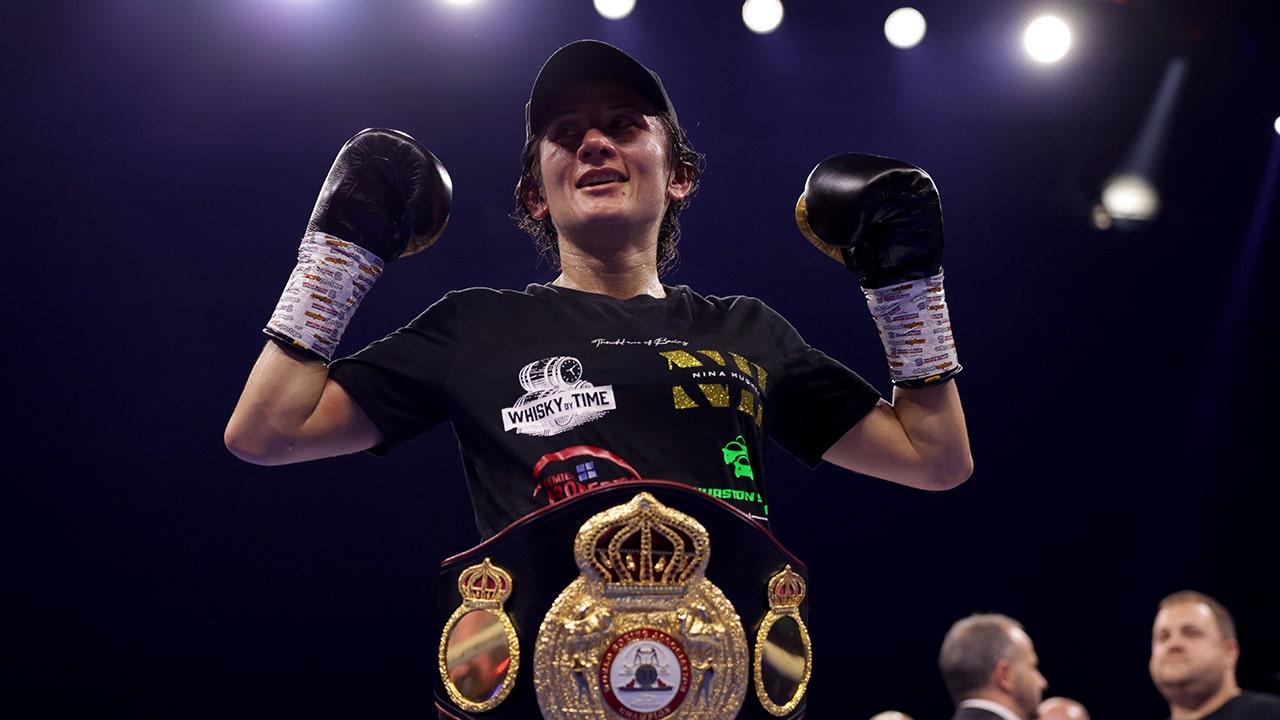
The American boxing ring announcer who called out the wrong winner after a title fight last weekend has resigned.
Following a boxing match between Cherneka Johnson and Nina Hughes in Australia on Saturday night, announcer Dan Hennessey read out the judge’s scorecards and mistakenly said Hughes was the winner of the WBA bantamweight title.
The ensuing social media backlash was too much to handle, Hennessey revealed.
“Thank you all for the kind words. Unfortunately, the worldwide backlash is absolutely incredible and it’s affecting my mental health to a degree where I will have one more show ever,” he wrote on Facebook. “I am doing this show because I am still a man of my word … I love and will keep in touch with all my friends from around the world. Thank you. No longer the world’s punching bag. I’m out.”
BRITISH BOXER DIES AFTER COLLAPSING DURING PRO DEBUT
Hennessey read out the judge’s scorecards and mistakenly said Nina Hughes was the winner of the WBA bantamweight title. (George Tewkesbury/PA Images via Getty Images)
The resignation comes after Saturday’s controversy shocked the boxing world.
ESPN’s Joe Tessitore ripped into Hennessey over the controversy.
“I want clean up what we saw with this absolute clown show, garbage amateur hour we saw with the ring announcer moments ago,” he said.
On Saturday, Johnson and Hughes went the distance and the fight came down to the judges’ decision.
Both fighters thought they had won the contest and were eagerly waiting to hear how the judges had scored it.
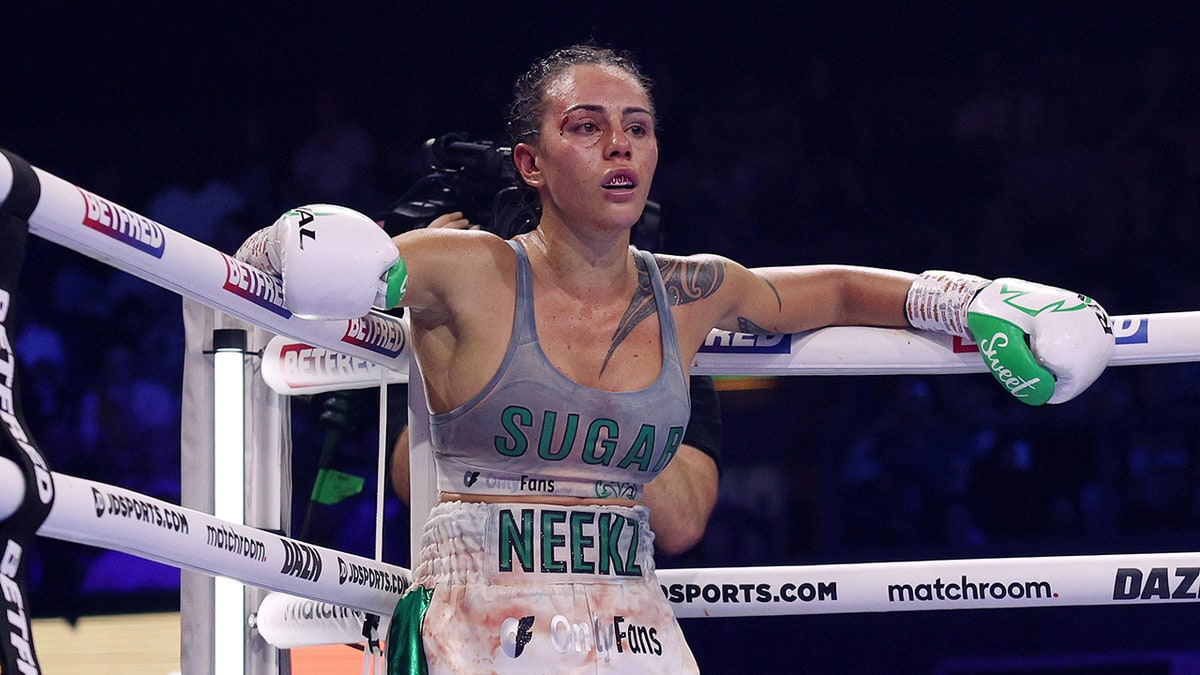
In contrast, Cherneka Johnson was euphoric to hear that she had actually won. (Warren Little/Getty Images)
The fighters joined Hennessey and the referee in the middle of the ring and Hennessey initially announced that Hughes was the winner of the fight.
The enthusiastic boxer began to celebrate but then the error was noticed.
The fighters were called back to the middle of the ring and Hennessey corrected himself, revealing Johnson won via split decision.
From triumphant to defeated, Hughes was forced to go from hearing she was the champion to hearing that she had suffered the first loss of her professional career.
“I just don’t get it,” Hughes said after the drama, via Sky Sports. “How can they announce I had won and then change the scores? I thought I’d dominated early. I thought she won a few of the later rounds but I felt like I won it comfortably.”
She added: “I don’t get how you can announce the winner and then change the scores. It’s a joke. I feel like I’ve been robbed big time. There’s got to be a rematch. I didn’t lose that fight.”
FRANK GORE JR SAYS ‘NO WAY 257 PLAYERS’ WERE BETTER PROSPECTS AFTER GOING UNDRAFTED
In contrast, Johnson was euphoric to hear that she had actually won.
“I’m not the judge and I’m just glad that they figured out the wrong decision,” Johnson said. “Nina was a tough fight. I’m not the judges, but I definitely think I won that fight. I’m just over the moon I won this bout.”

Dan Hennessey read out the judge’s scorecards and mistakenly said Hughes was the winner of the WBA bantamweight title. The subsequent social media backlash was too much to handle. (Adobe Stock)
After the initial drama, Hennessey apologized on Facebook.
“I own it. It’s all on me. I take full responsibility for the Chernika Johnson V Nina Hughes controversy,” he wrote. “Not the Judges, not the sanctioned body. Me.”
He added: “I have apologized to all involved and now I apologize to you. I am sorry for what happened. Again, I own it and can only try and do better next time. Not my best day in the office.”
Fox News’ Ryan Gaydos and Reuters contributed to this report.
Sports
Shohei Ohtani and the Dodgers dominate the Giants

Eleven months ago, the Dodgers and San Francisco Giants looked like two franchises headed in somewhat different directions.
In June, a surging Giants team came to Dodger Stadium, swept a three-game series in dominant fashion, and jumped their intradivison rivals in the National League West — marking the clear nadir of the Dodgers’ slow start to 2023.
A year later, the clubs are still seemingly headed in opposite directions.
Only now, it’s the Dodgers who are cruising with a big division lead, and the Giants struggling to gain any traction, in danger of suffering through yet another wasted year in the shadow of their Southern California counterparts.
The Dodgers’ 10-2 blowout of the Giants on Tuesday at Oracle Park served as the latest example.
The Dodgers had more hits (13 to nine), fewer errors (none to the Giants’ two), a better starting pitching performance (thanks to a six-inning, one-run effort from Gavin Stone), significantly more production from their star players (highlighted by Shohei Ohtani’s 12th home run and three total hits), and even a more vocal presence in a split crowd of 33,575.
Going back to last year, the Dodgers (29-15) have won six straight games against the Giants (19-25). They have clinched four straight series in a suddenly one-sided rivalry. And, not even two months into this season, they are already 10 games clear of San Francisco in the standings.
Rarely in this series’ recent history has one club’s stock been so up, while the other’s has been so dreadfully down.
“We’re catching them at the right time,” Dodgers manager Dave Roberts said. “But they’re not gonna feel sorry for us. We’re not gonna feel sorry for them.”
In almost every facet Tuesday, the Dodgers’ superiority over the Giants was pronounced.
Look at the team’s biggest offseason acquisitions.
The Giants saw their $54-million third baseman, Matt Chapman, go just one for four, leaving his batting average at .210; and their currently injured $42-million designated hitter, Jorge Soler, get drilled in the head during pregame batting practice by a ball that ricocheted off the cage.
Ohtani, meanwhile, maintained his MLB leads in batting average (.361), extra-base hits (29) and OPS (1.107), punctuating his three-hit night — he came just a triple shy of the cycle — with a towering 446-foot home run in the fourth inning that just landed short of McCovey Cove beyond the right-center-field bleachers.
“I was disappointed it didn’t go over,” Ohtani joked through his interpreter.
“That’s Barry territory,” Roberts added, referencing the long drives he used to watch Barry Bonds hit while teammates with him on the Giants. “There aren’t too many guys that can do that.”
The clubs’ rookie starting pitchers were another point of comparison.
Giants right-hander Keaton Winn was punished repeatedly for mistake pitches over the heart of the plate, giving up five runs in less than five innings.
Stone, on the other hand, continued his promising start to 2024, lowering his ERA to 3.27 by again inducing soft contact (he had only two strikeouts but gave up only five hits) and working in and out of trouble.
“This is a dream park to play in, especially with the Dodgers,” Stone said. “You can definitely feel the rivalry.”
The discrepancies didn’t end there.
The Dodgers received production from both of their big stars (Mookie Betts also had two hits) and the bottom of the order (including a triple from Gavin Lux and doubles from James Outman and Miguel Rojas).
They got three stress-free innings from the underbelly of their banged-up bullpen, a group that continues to shine even without several key relievers.
And, as the Dodgers poured on four insurance runs in the ninth inning, chants of “Let’s Go Dodgers” rang out around the ballpark, with almost nothing but blue-and-white-clad spectators left populating the stands.
Sports
WNBA is entering a new era: Skyrocketing viewership, sold-out arenas, young stars

Sue Bird hopes that when she’s in her 50s and 60s, she can be like a former NBA player who currently throws out opinions on television. One model Bird sees for herself: Charles Barkley. She remembers multiple instances of hearing the Naismith Hall of Famer talk about his playing days on TNT’s “Inside the NBA.”
“He’s like, ‘Oh, I had to fly commercial. I didn’t have these charter flights.’ Or, ‘Oh, these guys are making $40 million. Like, my contract was only —I don’t know, $10 million.’ And he kind of sounds disgruntled,” Bird said on NPR’s Fresh Air last month.
She wants to one day be able to toss out back-in-my-day tales. “I’ve always joked, I hope I’m that disgruntled athlete because that means all the blood, sweat and tears was for something,” she said. “It means the game has grown.”
Bird retired after two decades in the WNBA following the 2022 season. She hasn’t been out of the league even two full years (Bird technically jumped back in this April when she joined the Storm’s ownership group), but the league she’ll watch this summer is already in a better place than it was when she retired.
Changes — both momentous and minute — are already aplenty as the 28th regular season begins Tuesday. For years, as Bird and recently retired Candace Parker graced the hardwood, the WNBA chipped away at areas of growth. But now the pace of the adjustments is explosive.
“To be very honest, the impact of the wave right now is more profound than I thought it was going to be,” Storm co-owner Lisa Brummel said. “It got to be a bigger wave a lot faster than what I think we projected it to be. And wow, I’ll say it feels amazing.”
“Expansions were always in the design. The moment has arrived where the investment matches, finally, us being able to put these ideas to fruition.”
—@chiney on the growth of the WNBA 📈 pic.twitter.com/Y6egBKMcgY
— Get Up (@GetUpESPN) May 10, 2024
Television viewership numbers have skyrocketed across women’s basketball. April’s WNBA Draft averaged a record 2.47 million viewers, a 307 percent increase over last year, and it was the most-viewed WNBA telecast since 2000. The first preseason exhibition for Chicago Sky rookies Angel Reese and Kamilla Cardoso didn’t air on traditional television, but more than 500,000 viewers tuned in to a phone stream from a resourceful fan. It seems like a harbinger of what will come in the regular season, which tips off Tuesday.
“The growth is happening so fast,” said Cheryl Reeve, the Minnesota Lynx’s coach and president of basketball operations. “It’s so accelerated. And I’ve been saying this in our own organization, that business as usual isn’t going to work anymore.”
The early viewership returns reflect the strengthened link between the college and professional games. Cardoso and the South Carolina Gamecocks’ win over Caitlin Clark and the Iowa Hawkeyes in the 2024 national championship game averaged 18.9 million viewers, making it the most viewed women’s college basketball game ever and the most viewed basketball game (college or professional in men’s or women’s basketball) since 2019. The tournament was up 121 percent from 2023.
With a high-profile rookie class entering the league, WNBA attendance is swelling, too. No team had ever sold out its season ticket package in the offseason, but three teams (Las Vegas, Atlanta and Dallas) did this year. Three games have also been moved to bigger venues to accommodate more fans who want to see Clark play.
How players arrive at those contests will be changing as well. WNBA commissioner Cathy Engelbert announced last week that the league plans to add charter flights on a full-time basis sometime this season. The news came as the league’s existing charter policy appeared increasingly untenable in the long term.
GO DEEPER
WNBA will add charter flights on full-time basis this season
Clark and her Indiana Fever teammates traveled to Dallas for their first preseason game on a commercial airline and were greeted by a few fans and media members. They experienced no travel or security issues on their first road trip of the year, according to a team spokesperson. But one video clip showing Clark and center Aliyah Boston passing by a luggage carousel, with a member of the organization’s security team present, gained more than 2 million views. It served as a reminder of their current conditions.
Engelbert was uncommitted about when exactly a full-charter program would be implemented. She said the new travel program, which will cost about $25 million per year for the next two seasons, will launch “as soon as we can logistically get planes in places.” Still, the news of private travel was cause for celebration.
Lynx guard Kayla McBride called the change “a breath of fresh air.” Minnesota forward Napheesa Collier noted that with viewership increasing across women’s basketball, it was imperative to make the adjustment to protect player privacy.
“All these players in these spaces are becoming so popular that it really is about (safety) as much as it’s about recovery,” she said.
Even before Engelbert’s announcement, franchises around the league recognized the importance of increasing security. According to a person with knowledge of the Chicago Sky’s plans, after not traveling with security last season, the franchise will travel with security this season. Every WNBA team will travel with security personnel on its commercial flights, for as long as they remain the standard.
There has also been additional security around the Sky at practices, which take place at a public facility in suburban Chicago. Sachs Recreation Center wrote in an email, obtained by The Athletic, to its community members that beginning April 29, two police officers would be onsite during all Sky practices for the remainder of the season. Their presence is new this year and the change appears likely to have been driven by the Sky’s desire to bolster its player safety.
Fever general manager Lin Dunn said Indiana was taking similar precautions to ensure every member of her franchise would be safe when flying commercial. In addition to having a full security team at home games, the Fever will be traveling with multiple full-time security members, employed by Pacers Sports and Entertainment, on all road trips, the team spokesperson added. Multiple members of their security team will also be present at ancillary team events, like they were at Indiana’s promotional photo shoot in downtown Indianapolis last week.
Those changes are reflective of a new era in the WNBA. Breanna Stewart, the No. 1 pick in 2016, recalled taking photos and signing autographs at airports without a security detail present during her rookie season.
The travel adjustments demonstrate a commitment to improving player experiences. New facilities provide another significant boost. By season’s end, the Storm and Mercury will have opened new spaces. The Storm debuted their 50,000-square foot performance center in April, equipped with state-of-the-art strength and conditioning equipment, a health and wellness suite, and an aquatics room — all of it designed and engineered by a group that was 85 percent women and people of color. The Mercury’s will be part of one of the largest developments for a professional sports organization in the country, according to the franchise. It is expected to open by the time they host the mid-July All-Star Game.
Our new home 💚⛈️ pic.twitter.com/DHjRvHFEFR
— Seattle Storm (@seattlestorm) April 18, 2024
It should come as no surprise, then, that both added stars: Seattle signed 2016 league MVP Nneka Ogwumike and four-time first-team All-WNBA guard Skylar Diggins-Smith, while Phoenix bolstered its roster with 2021 Finals MVP Kahleah Copper and All-WNBA defensive team guard Natasha Cloud.
Having already become the first franchise to win consecutive titles in 21 years, the Las Vegas Aces will look to win a third straight this summer. Expect a standout season from their star, A’ja Wilson, who Nike announced on Saturday would be getting her own signature sneaker and clothing collection in 2025. Wilson is one of just over a dozen WNBA players ever to have a signature shoe and the first Black WNBA player to get a signature shoe since 2010.
All told, as Engelbert prepares to give the Aces their rings Tuesday night, she is glowing when thinking about the state of the WNBA. With league revenue having reportedly doubled since 2019, she said they have “huge investment” coming in through corporate and media partnerships. (The league’s existing media rights deal with ESPN ends after the 2025 season, and a new CBA could come into effect in 2026.) At April’s Draft, which was held in front of fans for the first time in eight years, feeling the positive momentum Engelbert said the WNBA was “ready for what’s next.”

GO DEEPER
WNBA to award Toronto expansion team: Reports
Expansion into new markets is part of what’s to come. A 13th franchise will begin play in the Bay Area in 2025, while a 14th team is reportedly set to launch in Toronto in 2026.
“We are witnessing a transformational moment in sports,” Engelbert said, “that we may not experience for generations.”
Bird, too, feels the added buzz. She said the sport has crossed a cultural cachet line. For that reason, it might not take Bird, 43, another seven years to become a semi-crotchety pundit. She might be able to tell stories about the old days before she even knows it.
(Photo of Caitlin Clark, Aliyah Boston and Temi Fagbenle: Gregory Shamus / Getty Images)
-

 Politics1 week ago
Politics1 week agoHouse Dems seeking re-election seemingly reverse course, call on Biden to 'bring order to the southern border'
-

 Politics1 week ago
Politics1 week agoFetterman says anti-Israel campus protests ‘working against peace' in Middle East, not putting hostages first
-

 News1 week ago
News1 week agoUS man diagnosed with brain damage after allegedly being pushed into lake
-

 World1 week ago
World1 week agoGaza ceasefire talks at crucial stage as Hamas delegation leaves Cairo
-

 Politics1 week ago
Politics1 week agoRepublicans believe college campus chaos works in their favor
-

 World1 week ago
World1 week agoStand-in Jose Raul Mulino wins Panama presidential race
-

 World1 week ago
World1 week agoTech compliance reports, Newsletter
-

 News1 week ago
News1 week agoColumbia University cancels its main commencement ceremony after weeks of turmoil

